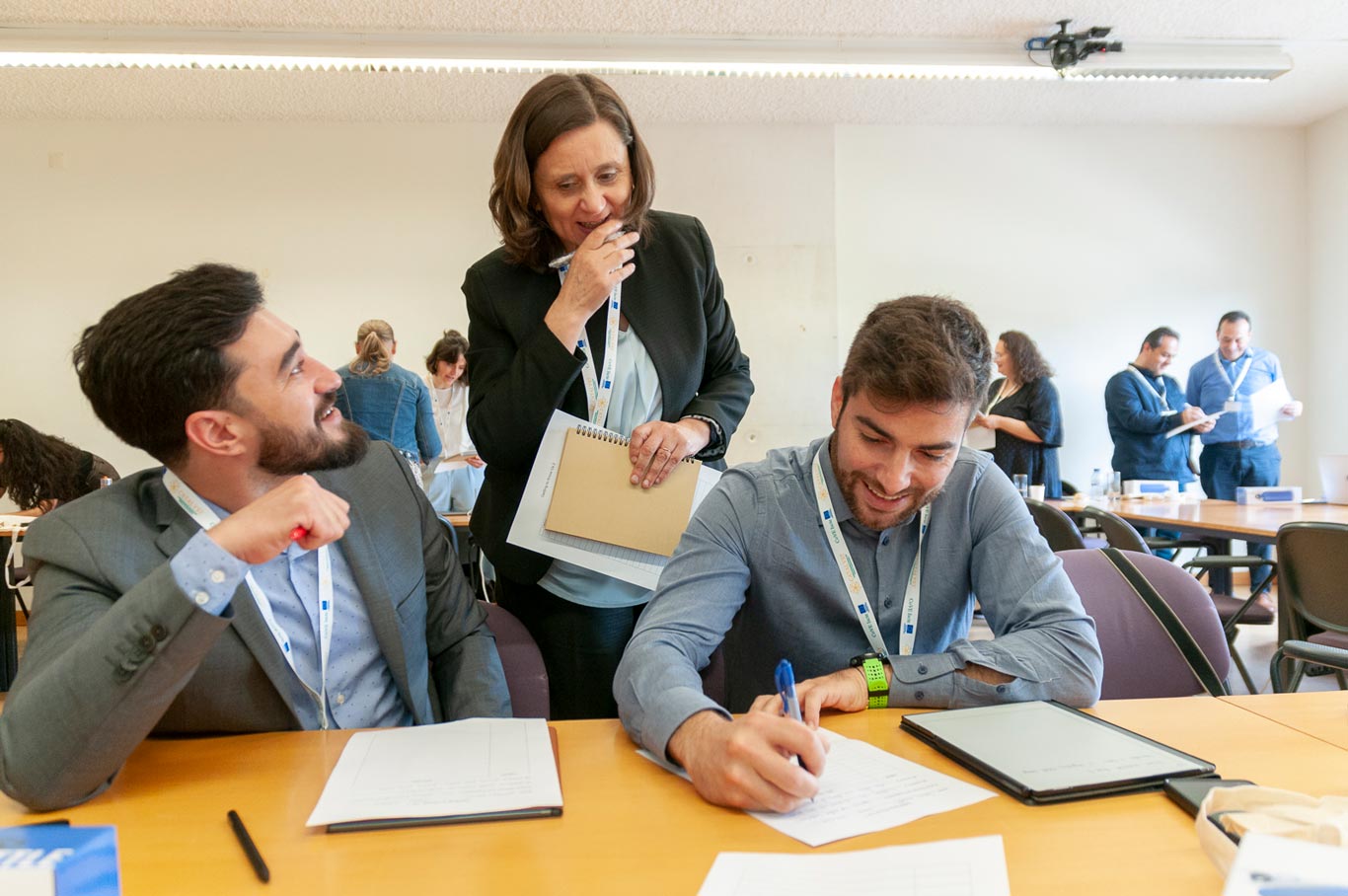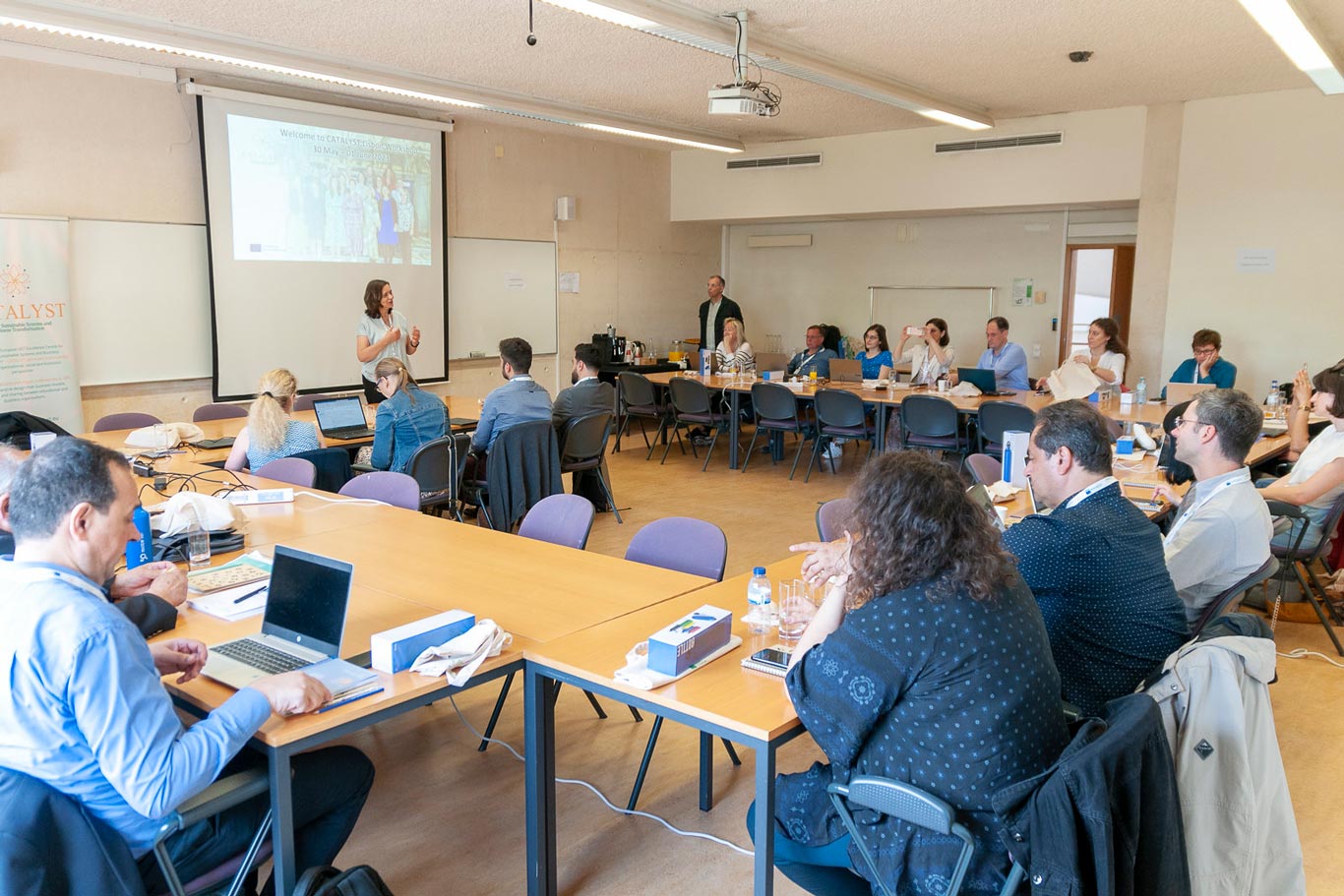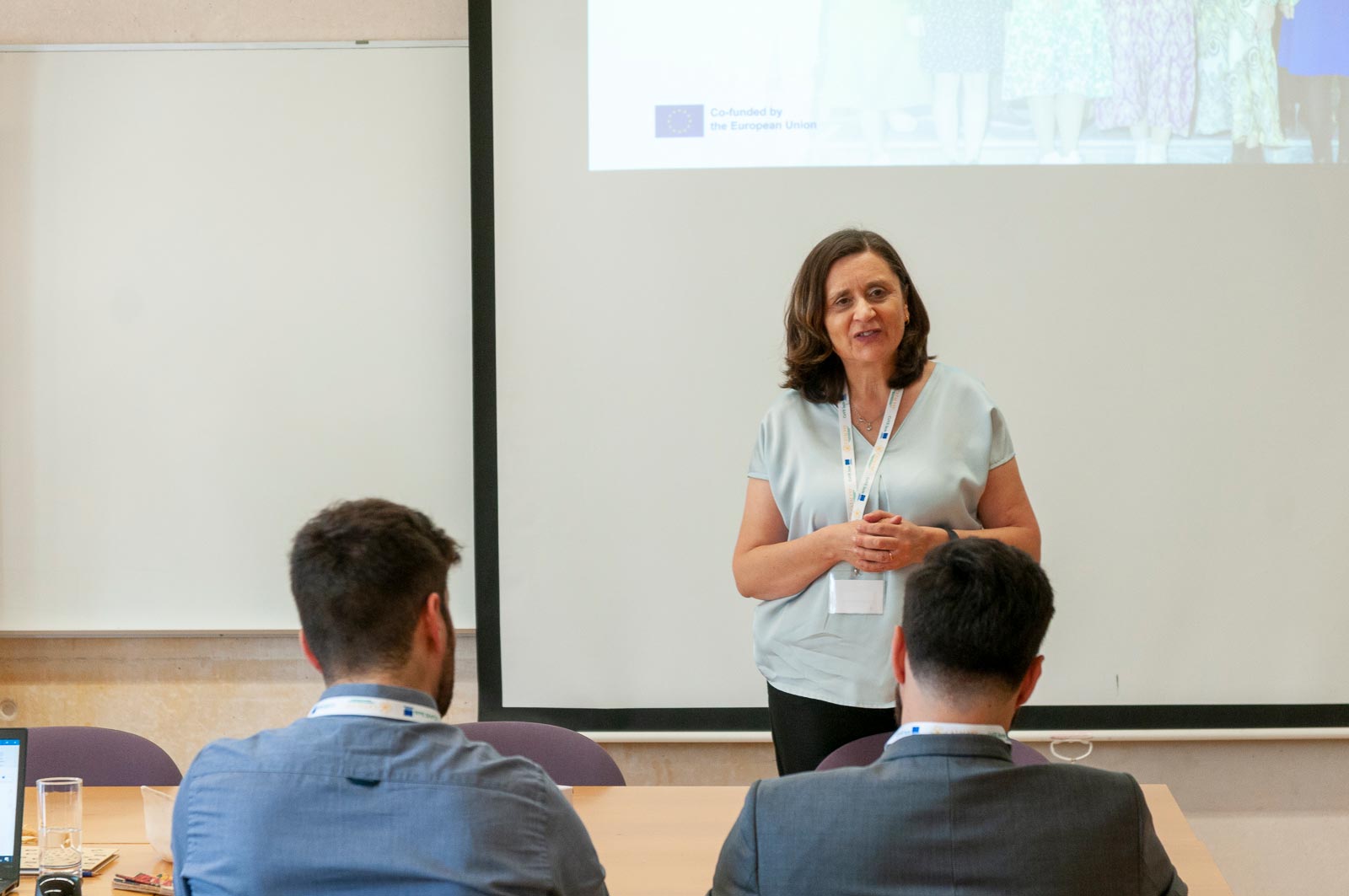The European Commission has been giving much importance to the issue of intangible assets, including those related to more innovative policies. Recognisably, Small and Medium-sized Enterprises (SMEs) make up 99% of the European Union’s productive fabric, which is the main source of innovation. However, with the current financial crisis, the financing of these companies has been very difficult and the risk in business has increased. Thus, the global economic crisis has placed the focus on the evaluation of companies, otherwise only sustained by financial criteria.
Systematically, many companies measure the financial risk but forget the risk inherent in their intangible assets. In most cases, managers have no clear understanding of how their intellectual capital directly impacts their financial performance. Nonetheless, there is much evidence that the sustainability of companies is not derived only from their financial performance, but also results from their intangible assets. Therefore, if the report of those intangible assets, e.g. the management of intellectual capital, is endowed with credible metrics recognised and accepted, it can work as a guarantee, ensuring its partners (e.g. shareholders, creditors, investors, customers, suppliers, etc.) the reliability and sustainability of the company. The relationship between a company’s intellectual capital management and financial performance has been studied by many researchers, and several methods of accounting intellectual capital have been created, but the process has never been widely accepted by the business community and the practice of measuring intellectual capital has no relevance compared to the financial statements. Against this background of urgent economic and environmental challenges, organisations and governments need to make coordinated and integrated efforts to achieve sustainability 5.0, which involves balancing economic, environmental, and social aspects with the digital economy to achieve excellence by promoting increasingly green and inclusive innovation.
Intellectual Capital
Intellectual Capital Intangibility is recognised as the main characteristic of intangible assets which, unlike financial assets, have no physical body, despite being a source of competitive and economic advantage and, when properly managed, being a critical success factor. In the case of companies and other organisations, these resources are usually based on three pillars: human capital, structural capital, and relational capital, which coincide with the multidimensional nature of the intellectual capital pillars.
Human capital is the capital of a company’s human resources, composed of their skills, the accumulated value of their practices, their creativity, their capacity for relationships, their values, and the company’s culture and organisational values. On the other hand, structural capital is understood as the current support infrastructure that supports the company and its human capital, such as databases, manuals, customer lists, processes, etc. Relational capital corresponds to the strength and loyalty of customers and other stakeholders responsible for cash flows and other factors that will contribute to future growth.
ICScoring
ICScoring is an intangibles management tool focused on intellectual capital management that allows the user to monitor its self-diagnosis of their intellectual capital management, e.g. it allows a company to position itself in the market by using adequate intellectual capital management practices. Its main tool is a questionnaire that periodically collects the opinions of the company’s managers about the management of their intellectual capital and a scoring function that was estimated based on data collected from other companies in similar sectors. Subsequently, ICScoring provides companies with an intellectual capital management report that positions them in the global market. From this point on, the ICScoring tool allows companies to be positioned concerning their sector of activity and their main competitors, thus becoming an element for evaluating positioning and competitive advantage. ICScoring provides companies with important information to improve their management practices. Yet, it is also a marketing tool because, by positioning companies in their market, it guarantees to their partners’ reliability in the management of intellectual capital and, therefore, its sustainability.

Florinda Matos engages with the students in the first Catalyst Workshop at Iscte
ICScoring provides companies with important information to improve their management practices and proposes an analysis of each component of intellectual capital management.
Features of ICScoring
ICScoring is an interactive tool that should be used by managers with a global vision of the company’s business. The ICScoring results reflect the quality of the information provided in the managers’ answers, and, consequently, they can only be considered relevant if the answers are true. ICScoring proposes an analysis of each component of intellectual capital management — human capital, structural capital, and relational capital — organised into five groups of information: 4 Quadrants: Individual Capital Quadrant, Team Capital Quadrant, Sustainable Processes Capital Quadrant, Customer Capital Quadrant; Networks and New Technologies.
The Individual Capital, Team Capital, and Process Capital quadrants are directly related to the company’s internal environment and are decisive for its appropriate performance. The Customer Capital quadrant relates to how the company correlates to its external environment. The Individual Capital and Team Capital quadrants represent variables that fall under Human Capital. The Process Capital quadrant represents the variables that fall under structural capital. The Customer Capital quadrant corresponds to Relational Capital. The Process Capital quadrant includes the different standards, adapted from the GRI Global Reporting Initiative, which make it possible to identify whether the organisation is complying with the main sustainability criteria. Networks and New Technologies are structuring elements that allow the four quadrants to be linked, encourage the circulation of information, facilitate relationships between people, and access up to-date information on the results of research (internal and/or external) relevant to the organisation. They can be considered catalysts or intensifiers of the processes of access to knowledge, innovation, and the organisation’s adaptation to the external environment. This is also where we can see how digital transformation is being used to improve the sustainable management of the organisation.
Individual Capital Quadrant
Individual Capital refers to personal skills, social competencies, qualifications, formal education, and experience, e.g. the competencies that each individual is willing to put at the service of the company, with a view to permanent customer orientation. When individuals combine these competencies with the ability to understand the company’s business, this is extremely valuable individual capital.
Team Capital Quadrant
Team Capital results from how individuals’ skills are combined, creating group affiliation. Team Capital presupposes the existence of a type of group that shares common goals and differentiates itself from others by its level of performance in each task. Teamwork is therefore an intangible asset, but one that translates into the ability to carry out tasks efficiently and effectively, while generating satisfaction in team members. Teams generate value for the organisation and are an essential source of competitive advantage. They operationalise the sharing of individuals’ tacit knowledge and transform it into explicit or formalised knowledge, in the form of specifications, process descriptions, rules, and regulations, amongst others. When this tacit knowledge of individuals is shared with the collective, it gains a higher value and is in a position to become structural capital.
Process Capital Quadrant
When the explicit knowledge of teams is combined with structural capital, the formalisation and development of organisational memory emerges, which in turn supports the improvement of processes with a focus on total quality. When we talk about Process Capital, we are referring to knowledge that does not belong to individuals, but to the organisation, and which is recognised as Structural Capital. Structural Capital results from the method by which people’s know-how is incorporated and organised in the company, responding to customer needs. Likewise, the ability to attract and retain skilled people are anchored in Structural Capital, where recruitment and selection processes, career development, reward systems, motivation, challenging tasks, internal organisation, and so on are decided.
Organisations have their history that is documented through computerised files or paper files that are the result of routines that are assimilated over time and later standardised in procedural manuals. Access to this information is facilitated through information management, carried out with the support of information and communication technologies. The dissemination of this information is also facilitated by networks. So, for example, there are specific channels for communicating with customers or suppliers, for internal organisation, for recruitment, amongst others, which do not depend specifically on each individual in the organisation, but on the company’s internal organisation. In summary, we can say that Process Capital includes all the competencies aimed at customer orientation and all the internal routines that must be geared toward sustainability.
Team Capital results from how individuals’ skills are combined, creating group affiliation.
Therefore, Customer Capital includes all the company’s knowledge of the market.

Customer Capital Quadrant
Customer Capital arises when individuals can create solutions (products or services) that fulfil the needs or solve the problems of the customer. The customer relationships that enable this capital to be formed, in a stable way over time, require continuous work to establish lasting relationships. Market research and the analysis of customer satisfaction are some of the actions that make it possible to measure the image customers have of the company.
Systematising the results of these studies into standards and procedures is an example of transforming them into structural capital, which is why we say that Customer Capital is the result of an essential part of structural capital. Customers are difficult to retain, so the company’s knowledge must be invested in processes that make it easier to retain these customers. The correct use of Networks and New Technologies is decisive in interacting with customers and therefore in building stable Customer Capital.
Customer focus presupposes continuous investment in innovation and development to satisfy previously inventoried needs. Therefore, Customer Capital includes all the company’s knowledge of the market, namely indicators that provide information on the size of the target market and potential market, customer preferences, purchasing decision factors, and the company’s reputation or image in the market.
Individual Capital Quadrant
Individual Capital refers to personal skills, social competencies, qualifications, formal education, and experience, e.g. the competencies that each individual is willing to put at the service of the company, with a view to permanent customer orientation. When individuals combine these competencies with the ability to understand the company’s business, this is extremely valuable individual capital.
Team Capital Quadrant
Team Capital results from how individuals’ skills are combined, creating group affiliation. Team Capital presupposes the existence of a type of group that shares common goals and differentiates itself from others by its level of performance in each task. Teamwork is therefore an intangible asset, but one that translates into the ability to carry out tasks efficiently and effectively, while generating satisfaction in team members. Teams generate value for the organisation and are an essential source of competitive advantage. They operationalise the sharing of individuals’ tacit knowledge and transform it into explicit or formalised knowledge, in the form of specifications, process descriptions, rules, and regulations, amongst others. When this tacit knowledge of individuals is shared with the collective, it gains a higher value and is in a position to become structural capital.
Process Capital Quadrant
When the explicit knowledge of teams is combined with structural capital, the formalisation and development of organisational memory emerges, which in turn supports the improvement of processes with a focus on total quality. When we talk about Process Capital, we are referring to knowledge that does not belong to individuals, but to the organisation, and which is recognised in Structural Capital. Structural Capital results from the method by which people’s know-how is incorporated and organised in the company, responding to customer needs. Likewise, the ability to attract and retain skilled people is anchored in Structural Capital, where recruitment and selection processes, career development, reward systems, motivation, challenging tasks, internal organisation, and so on are decided.
Organisations have their history that is documented through computerised files or paper files that are the result of routines that are assimilated over time and later standardised in procedural manuals. Access to this information is facilitated through information management, carried out with the support of information and communication technologies. The dissemination of this information is also facilitated by networks. So, for example, there are specific channels for communicating with customers or suppliers, for internal organisation, for recruitment, amongst others, which do not depend specifically on each individual in the organisation, but on the company’s internal organisation. In summary, we can say that Process Capital includes all the competencies aimed at customer orientation and all the internal routines that must be geared toward sustainability.

Photo Group of the First Catalyst Workshop in Lisbon, 2023
Networks and New Technologies
Networks, supported by New Technologies, are fundamental to the development of a network culture in which employees actively participate within the organisation. Thus, Networks must support an ‘Interactive Ideas Exchange’ that favours the development of individual talents. Networks bring employees and teams closer together, providing forums for sharing knowledge and enabling the dissemination of good practices. Recent experience suggests that the company’s focus on earning processes and transferring best practices to the organisation and its managers is a highly positive factor from the point of view of its adaptability and an important factor in innovation. The interactive teams integrated into the Networks discuss and improve the quality of processes with a view to customer satisfaction.
Networks are, therefore, part of a ‘collective intelligence action’ in which the knowledge of each company employee is put at the service of customer satisfaction and better interaction with the network of suppliers and partners. New Technologies are also an essential tool for companies’ organisational and productive development and should function as an administrative management tool, maximising organisational performance by improving processes that are strictly memorised.
Additionally, New Technologies must be used as a tool integrated into a network culture, where the individuals in the teams participate actively, generating a team culture focused on the organisation’s overall results. New Technologies are essential for recording organisational knowledge and should allow for interactive databases and electronic contact systems that enable connections with suppliers, customers, and other stakeholders. They are, therefore, a fundamental element in improving the quality of the organisation’s service.

